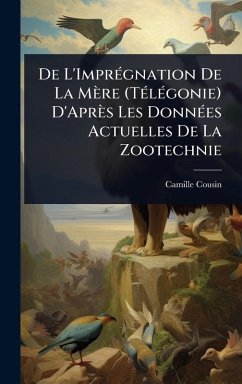
Les Vers Et Les Zoophytes DÃ(c)crits Et FigurÃ(c)s D'après La Classification De Georges Cuvier Mise Au Courant Des Progrès De La Science
Versandkostenfrei!
Versandfertig in über 4 Wochen
30,99 €
inkl. MwSt.
Weitere Ausgaben:

PAYBACK Punkte
15 °P sammeln!
Les Vers Et Les Zoophytes is a detailed 19th-century study of worms and zoophytes, presented according to the classification system of Georges Cuvier. This work features thirty-seven plates illustrating 550 figures, meticulously drawn from nature and engraved on copper, depicting the most remarkable species. The book provides an in-depth look at these often-overlooked creatures, highlighting their diversity and unique characteristics. A valuable resource for naturalists, historians of science, and anyone interested in the zoological studies of the early 19th century, this book offers a glimpse...
Les Vers Et Les Zoophytes is a detailed 19th-century study of worms and zoophytes, presented according to the classification system of Georges Cuvier. This work features thirty-seven plates illustrating 550 figures, meticulously drawn from nature and engraved on copper, depicting the most remarkable species. The book provides an in-depth look at these often-overlooked creatures, highlighting their diversity and unique characteristics. A valuable resource for naturalists, historians of science, and anyone interested in the zoological studies of the early 19th century, this book offers a glimpse into the scientific understanding and artistic representation of marine invertebrates during this period. The detailed illustrations and comprehensive descriptions make it a significant contribution to the field of natural history. This work has been selected by scholars as being culturally important, and is part of the knowledge base of civilization as we know it. This work was reproduced from the original artifact, and remains as true to the original work as possible. Therefore, you will see the original copyright references, library stamps (as most of these works have been housed in our most important libraries around the world), and other notations in the work. This work is in the public domain in the United States of America, and possibly other nations. Within the United States, you may freely copy and distribute this work, as no entity (individual or corporate) has a copyright on the body of the work. As a reproduction of a historical artifact, this work may contain missing or blurred pages, poor pictures, errant marks, etc. Scholars believe, and we concur, that this work is important enough to be preserved, reproduced, and made generally available to the public. We appreciate your support of the preservation process, and thank you for being an important part of keeping this knowledge alive and relevant.












